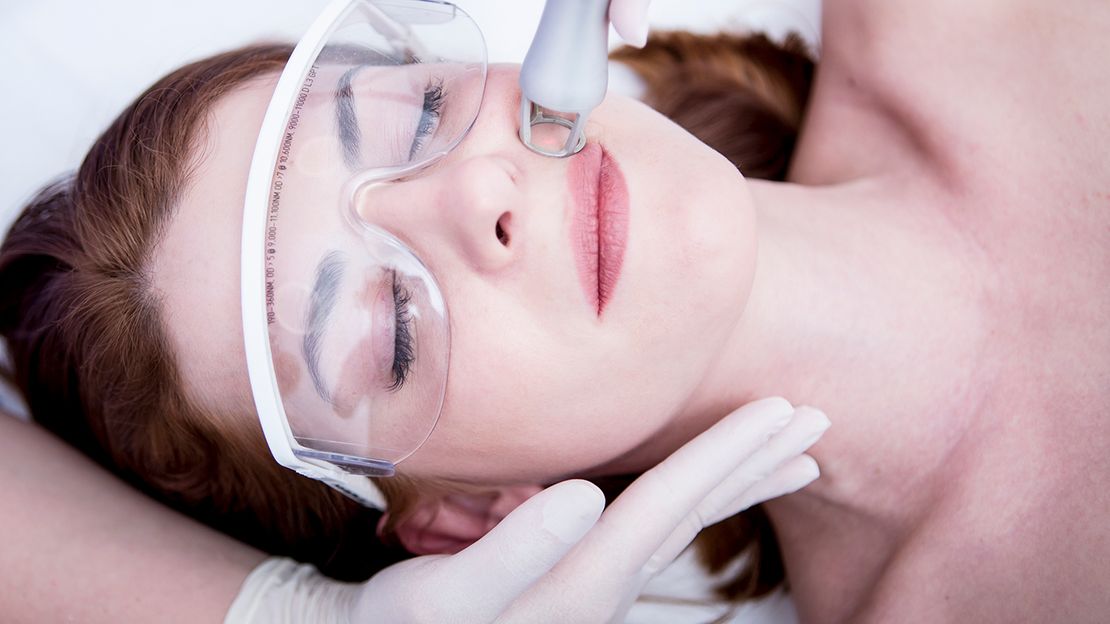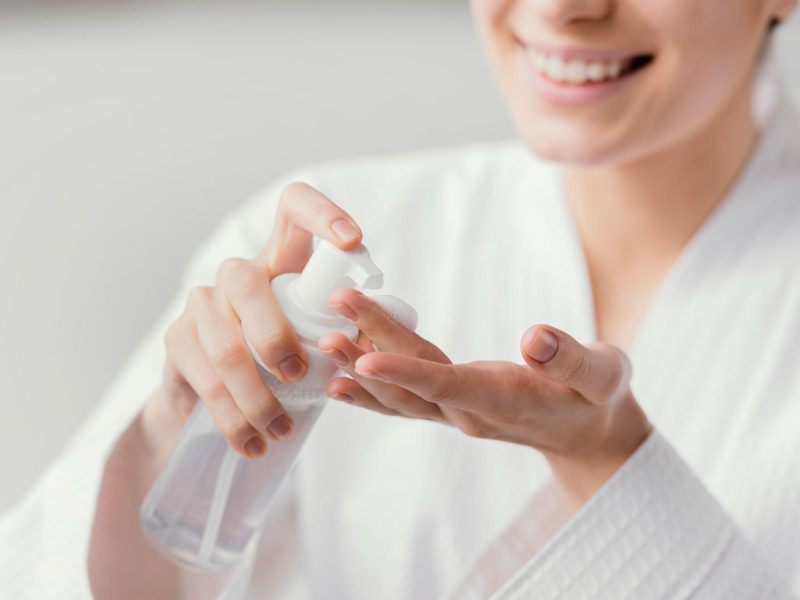Using carbon dioxide lasers, tiny layers of skin can be accurately removed with little harm to the nearby structures. As a result, these lasers can cure skin issues such as birthmarks, warts, wrinkles, scars, and sun damage.
The superficial layer of your skin is removed with the co2 laser skin resurfacing near me.
This particular laser therapy can:
- Treat cosmetic skin conditions like fine or deep wrinkles, acne scars, and skin cancer.
- Treat sunspots and age spots, as well as other skin pigmentation issues.
- A dermatologist or cosmetic surgeon may also utilize fractional lasers, another kind of CO2 laser, depending on the problem being treated. However, because fractional lasers work more superficially than conventional CO2 lasers, they are primarily utilized to treat small wrinkles and blotchy skin.
I want you to continue reading to learn all there is to know about co2 fractional lasers near me.
What’s the process of CO2 laser resurfacing?
Laser light pulses are used in C02 laser resurfacing. These rays pass through the skin’s surface and are absorbed by the water in the skin cells.
The epidermis, or the outermost layer of your skin, gets vaporized when this occurs. The middle layer, or dermis, warms up, promoting the development of new collagen fibers. Old layers of skin are replaced by new, smoother, firmer skin as the area heals.
A dermatologist or cosmetic surgeon can precisely target a few spots of your skin during CO2 laser resurfacing so the surrounding skin won’t be affected.
Exactly how is the procedure carried out?
Your surgeon will choose the best procedure for you after the initial consultation.
Patients endure substantial swelling, redness, and some serum seeping from the treated skin’s surface for a few days following the procedure because this device creates microscopic perforations in the skin’s surface.
After this procedure of c02 laser treatment near me, recovery is fairly quick, requiring little maintenance for approximately a week. The redness of the treated skin usually goes away during the next week. Most patients will notice a significant improvement in their appearance within just ten days. This improvement will last several months as the skin produces more collagen following this special laser therapy.
What should you expect both during and after a CO2 laser resurfacing procedure?
Local anesthesia and sedative drugs are typically used during outpatient carbon dioxide laser resurfacing. A partial face treatment takes an hour and a half to two hours, while the therapy lasts 30 to 45 minutes. The treatment locations are covered with a non-stick covering for 24 hours after the procedure. Oil-free makeup can be used to conceal the pink-to-red color after healing. The risk of hyperpigmentation in patients with darker skin tones can be reduced by using a bleaching agent before surgery and continuing to use it after healing. Sun exposure should be avoided for four weeks before and after the treatment.
What potential drawbacks and risks could there be with carbon dioxide laser resurfacing?
During the healing process, milia, which are little white bumps or cysts, may develop in the laser-treated areas like nose. These can be eliminated with careful washing with a washcloth or in-office excision of the cystic material by a dermatologist by nicking the skin’s surface with a blade.
- After laser resurfacing, acne flare-ups could happen. This may go away independently or can be handled with standard acne treatments.
- In the laser-treated areas, hyperpigmentation and, less frequently, hypopigmentation may develop. Bleaching cream can generally be applied to hyperpigmented areas to speed up the pigment’s fading. Treatment for hypopigmentation is more challenging.
- Herpes simplex cold sore reactivation is possible, especially after laser resurfacing around the mouth. Giving an antiviral medication before surgery and continuing it for seven to ten days afterward will help to prevent this.
- Bacterial infections can be avoided by taking an antibiotic for seven to ten days after surgery and the recovery duration.
- Steroids administered intramuscularly can reduce the predicted postoperative edema.
- Patients are advised to use an additional pillow at night to help with swelling reduction. Utilizing an ice pack for the first 24 to 48 hours is also beneficial.
- Scarring can happen in laser-treated areas, albeit it is uncommon.
- Because smoking has been shown to impact the healing process negatively, so quitting is strongly advised.
How should I look after my skin after having a CO2 laser resurfacing?
Following healing, the newly laser-resurfaced skin must be protected daily with sunscreen. A broad-spectrum sunscreen that blocks ultraviolet B and ultraviolet A rays is advised. In addition, use sunscreen that has been designed for the face and has an SPF of at least 30.
Following healing, liberal moisturizing is also advised. Then, approximately six weeks following the treatment, or as instructed by your healthcare professional, you can start applying Retin-A and glycolic acid products again.
What advantages are there?
Numerous aesthetic and medical skin conditions, such as scars, skin cancer, aging, and sun damage, can be treated with CO2 laser resurfacing.
Wrinkles and fine lines
The appearance of fine lines and wrinkles can be lessened with CO2 laser resurfacing. It could be particularly useful for:
- creases and lines around the eyes, often known as crow’s feet
- forehead creases and furrows
- laughter lines, or lines around the mouth
- Not only does it minimize wrinkles immediately, but it can also promote collagen growth over time, enhancing the condition of your skin.
Sun-damaged skin
UV radiation exposure may lead to the development of noticeable skin aging symptoms like:
- sagging wrinkles brought on by a loss of elasticity
- uneven and rough skin texture
- Sunspots and liver spots
- syringe veins
Those mentioned earlier can be made substantially less obvious using CO2 laser resurfacing.
Droopy eyes
“baggy” or “hooded eyes” is typically caused by loose skin above the upper and lower eyelids.
CO2 lasers can help tighten skin, reduce the appearance of puffy eyes, and enhance eyelid skin laxity.
Acne scars
By promoting collagen formation, which helps tighten and smooth out the scars, C02 laser treatment for acne scars helps lessen the appearance of acne scarring.
However, it might not be effective for all forms of acne scars.
2018 in review, a reputable source advises combining treatments for ice-pick-shaped acne scars; Trusted Source treatments like micro-needling, subcision, and a trichloroacetic acid (TCA) peel may be more successful.
The Conclusion
Your skin can be rejuvenated, and some skin issues can be treated with CO2 laser resurfacing by a skilled dermatologist or cosmetic surgeon.
Thinking about receiving co2 laser resurfacing near me? Make an appointment for a consultation with a reputed expert to get started and get more information on if this therapy could benefit your skin issues.
Also Read: Lily Tomlin plastic surgery


